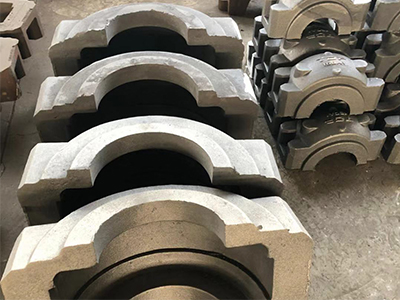- What needs to be done before delivery of large steel castings?
- Quality control of gray cast iron
- Why is it said that deoxidation is the key to improve the quality of molten steel?
- Factors affecting machine tool castings
- Buy cast iron machine tools pay attention to quality
- What should I pay attention to in the production process of stainless steel casting?
- Casting defect examination
- Matters needing attention in detail handling of stainless Steel Castings
- Precision casting Machining is often avoided in defects
- Which kind of steel castings is the most suitable for non-destructive testing
- Call : +86 13390692151
- sale@kfqizhongji.com
-
Room 1, No. 21, Chaoying East Road, Zhoushi,
Kunshan City, Jiangsu Province, China
Carbon Steel Casting Alloys
Carbon steel is steel in which the main alloying constituent is carbon in the range of 0.12–2.0%. The American Iron and Steel Institute (AISI) defines that:
Steel is considered to be carbon steel when no minimum content is specified or required or chromium, cobalt, molybdenum, nickel, niobium, titanium, tungsten,vanadium or zirconium, or any other element to be added to obtain a desired alloying effect; when the specified minimum for copper does not exceed 0.40 percent; or when the maximum content specified for any of the following elements does not exceed the percentages noted: manganese 1.65, silicon 0.60, copper 0.60. The term “carbon steel” may also be used in reference to steel which is not stainless steel; in this use carbon steel may include alloy steels.
As the carbon percentage content rises, steel has the ability to become harder and stronger through heat treating; however, it becomes less ductile. Regardless of the heat treatment, a higher carbon content reduces weldability. In carbon steels, the higher carbon content lowers the melting point.
As a group, carbon steels are by far the most frequently used steels. More than 85% of the steel produced and shipped in the United States is carbon steel. Carbon steel is also the most common material for steel castings.
Low-carbon steels contain up to 0.30% C. The largest category of this class of steel is flat-rolled products (sheet or strip), usually in the cold-rolled and annealed condition. The carbon content for these high-formability steels is very low, less than 0.10% C, with up to 0.4% Mn. Typical uses are in automobile body panels, tin plate, and wire products.
For rolled steel structural plates and sections, the carbon content may be increased to approximately 0.30%, with higher manganese content up to 1.5%. These materials may be used for stampings, forgings, seamless tubes, and boiler plate.
Medium-carbon steels are similar to low-carbon steels except that the carbon ranges from 0.30 to 0.60% and the manganese from 0.60 to 1.65%. Increasing the carbon content to approximately 0.5% with an accompanying increase in manganese allows medium carbon steels to be used in the quenched and tempered condition. The uses of medium carbon-manganese steels include shafts, axles, gears, crankshafts, couplings and forgings. Steels in the 0.40 to 0.60% C range are also used for rails, railway wheels and rail axles.
High-carbon steels contain from 0.60 to 1.00% C with manganese contents ranging from 0.30 to 0.90%. High-carbon steels are used for spring materials and high-strength wires.
Ultra high-carbon steels are experimental alloys containing 1.25 to 2.0% C. These steels are thermomechanically processed to produce microstructures that consist of ultrafine, equiaxed grains of spherical, discontinuous proeutectoid carbide particles.





